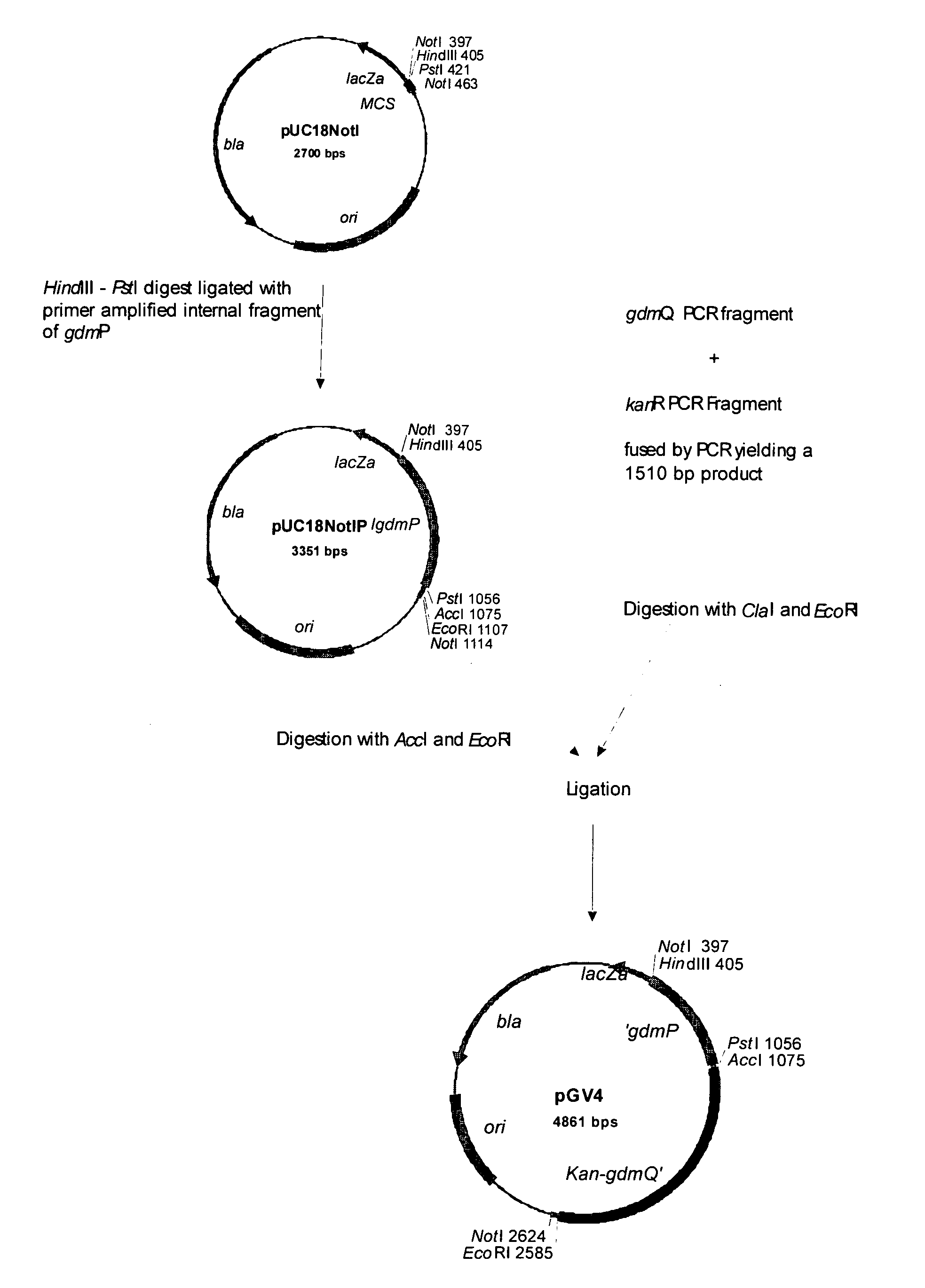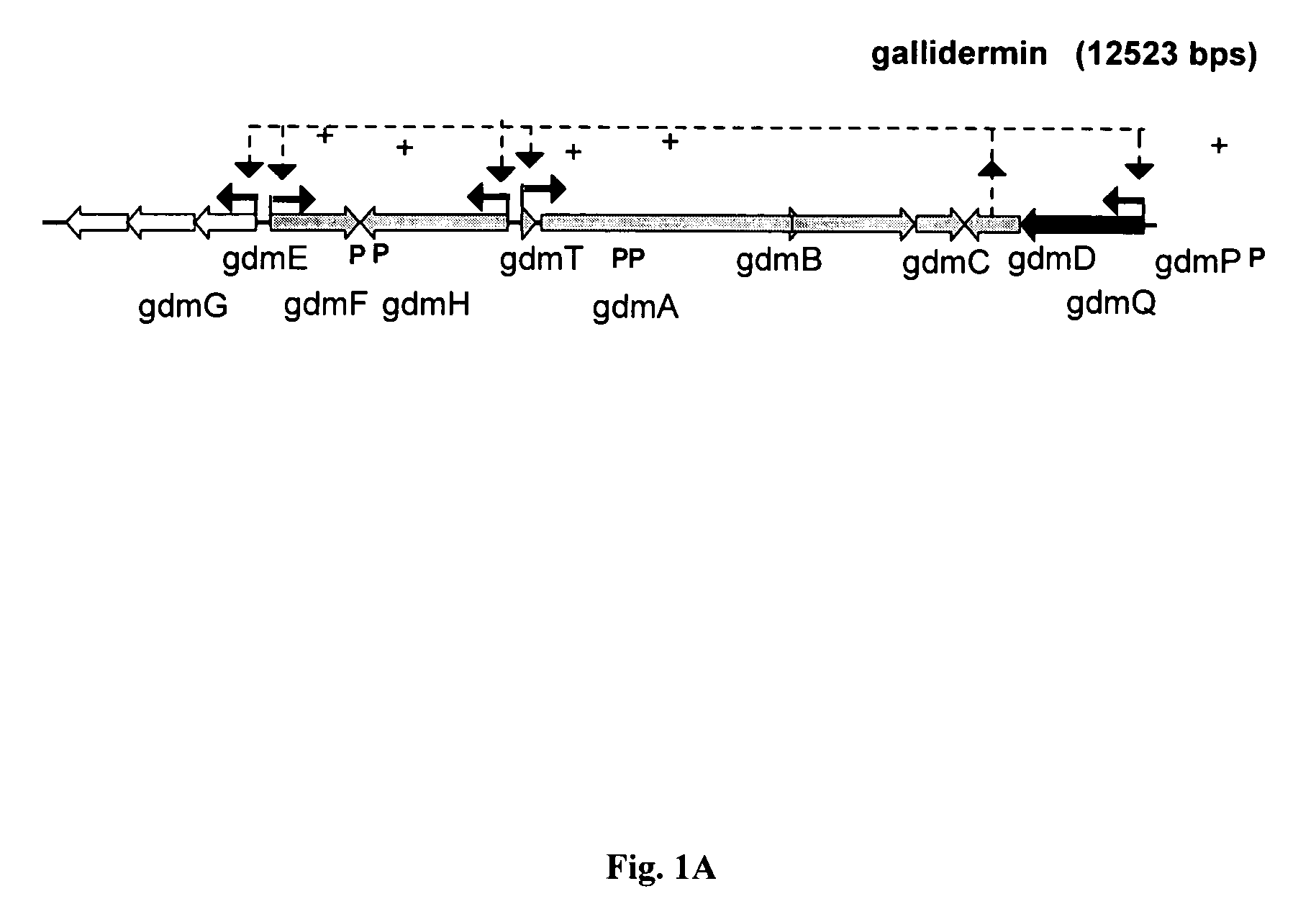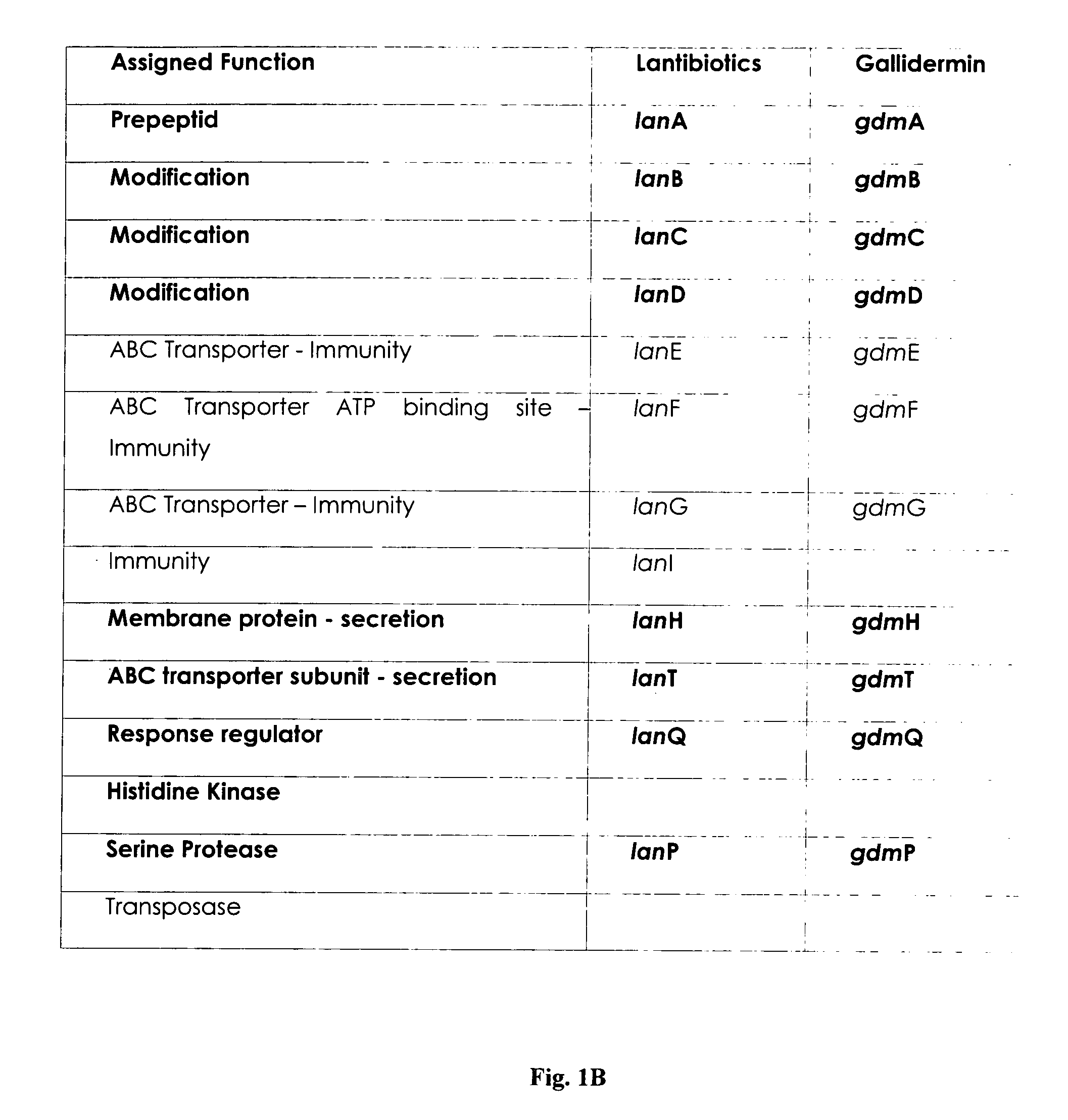Biosynthetic process for the preparation of gallidermin
a biosynthetic process and gallidermin technology, applied in the field of biosynthetic process for the preparation of gallidermin, can solve the problems of low product titre in the fermentation broth and in the rather complex experimental process with on-line product recovery
- Summary
- Abstract
- Description
- Claims
- Application Information
AI Technical Summary
Benefits of technology
Problems solved by technology
Method used
Image
Examples
example 1
[0062]Construction of a pre-gallidermin producing strain
[0063]The natural producer of gallidermin is Staphylococcus gallinarum Tü3928. This strain carries in its chromosome all nine genes (14 kb) required for the biosynthesis and its regulation, postranslational modification, export, immunity and a gallidermin specific serine protease, designated GdmP (FIG. 1A / B; Götz & Jung, 2001; Hill; 2002). For pre-gallidermin production, said GdmP serine-type protease needs to be inactivated. Several genetic approaches for inactivating GdmP are possible to those skilled in the art, including an in frame deletion of the gene, insertional disruption and inactivation, or by preventing m-RNA translation, e.g. using antisense sequences. Alternatively, the gdmP product, the protease, can be chemically inactivated during fermentation.
[0064]Here the inactivation of the gdmP gene is carried out by insertional disruption. Care has to be taken for the expression of the translationally coupled, downstream ...
example 2
Fermentative Production of Pre-Gallidermin
[0087]Gallidermin is produced by Staphylococcus gallinarum Tü3928. Several protocols have been described in the recent literature that detailed the production and yields of gallidermin and its partial purification (Fiedler et al., 1988; Kellner et al., 1988; Kempf et al., 2001; EP0342486). These protocols include the direct adsorption of gallidermin from the fermentation broth with Amberlite XAD-1180. The water washed resin was eluted with acidified methanol, and the gallidermin was recovered by drying the eluate in vacuo yielding some 2.7 g crude material from a 20-L fermentation. The crude gallidermin was further purified by ion exchange chromatography on Amberlite IRC-50 resin followed by a desalting step again on XAD-1180 yielding about 1 g of the crude antibiotic. Final purification was achieved on a reversed-phase chromatography with a 10C18 column, reducing the yield to 100 mg purified gallidermin obtained from a 30-L fermentation. Du...
example 3
[0097]Following the fermentation, the initial steps of the isolation of the gallidermin precursor molecules involve the removal of the biomass using filtration technologies or centrifugation. For demonstration purposes, centrifugation with 10,000×g for 10 minutes was employed. The clear, cell-free supernatant containing the gallidermin precursor molecules was than applied to a hydrophobic interaction chromatography using commercially available resins such as Amberlite XAD1600, XAD1180, XAD16, XAD7, XAD7HP and)(AD-4 Amberlite resins and all chemicals were provided from Fluka (Buchs, Switzerland), Rohm & Haas (Philadelphia, Pa., U.S.A.) or Roth (Reinach, Switzerland) unless mentioned otherwise. It was critical for that resins were washed prior use. Packed into a column (20×1.5 cm I.D.) resins were washed with 8 bed volumes methanol. The alcohol was then displaced with 8 bed volumes of double distilled water prior to adsorption. Adsorption was tested at pH 6, 7 and 8 by adjusting the p...
PUM
| Property | Measurement | Unit |
|---|---|---|
| Fraction | aaaaa | aaaaa |
| Fraction | aaaaa | aaaaa |
| Time | aaaaa | aaaaa |
Abstract
Description
Claims
Application Information
 Login to View More
Login to View More - R&D
- Intellectual Property
- Life Sciences
- Materials
- Tech Scout
- Unparalleled Data Quality
- Higher Quality Content
- 60% Fewer Hallucinations
Browse by: Latest US Patents, China's latest patents, Technical Efficacy Thesaurus, Application Domain, Technology Topic, Popular Technical Reports.
© 2025 PatSnap. All rights reserved.Legal|Privacy policy|Modern Slavery Act Transparency Statement|Sitemap|About US| Contact US: help@patsnap.com



